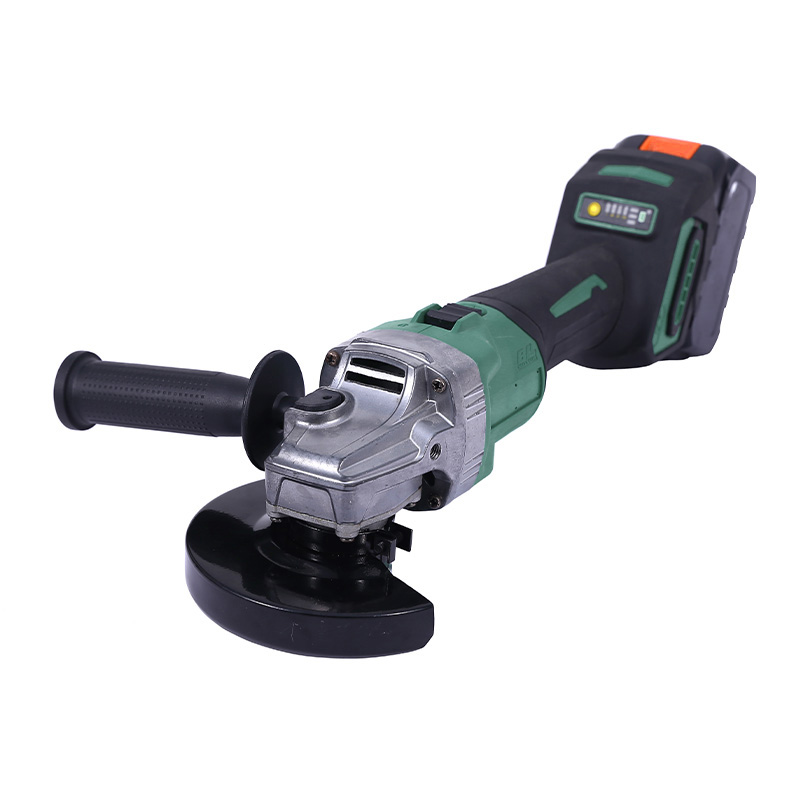Wholesale cordless brushless rechargeable angle grinder Company
In the bustling world of construction, where efficiency and safety are paramount, the advent of rechargeable angle grinders has revolutionized the way work is done. These power tools, with their ability to be recharged and used repeatedly, have become an indispensable part of the construction toolkit. This article delves into how rechargeable angle grinders are enhancing both safety and performance in the construction industry.
Traditionally, angle grinders were corded, which meant they were tethered to a power source. This limitation not only restricted the mobility of workers but also posed a tripping hazard, increasing the risk of accidents on construction sites. The introduction of rechargeable angle grinders has mitigated these risks. These tools offer the freedom of movement without the constraints of a power cord, reducing the likelihood of accidents and improving overall site safety.
One of the most significant advantages of rechargeable angle grinders is their mobility. Workers can move around the construction site with ease, reaching areas that were previously inaccessible with corded tools. This increased flexibility not only speeds up work but also allows for more precise and detailed work in hard-to-reach areas. The ability to move freely with a rechargeable angle grinder also means that workers can avoid potential electrical hazards, further enhancing safety on the job.
In the past, workers had to wait for their angle grinders to be connected to a power source or change to a new power cord when the battery died. With rechargeable angle grinders, downtime is significantly reduced. Workers can simply swap out a depleted battery for a fully charged one, allowing them to continue working without interruption. This continuous operation leads to increased productivity and faster project completion times.
Safety is a critical consideration in the construction industry, and rechargeable angle grinders come with several features designed to protect workers. Many models include safety switches that prevent the tool from starting up unexpectedly, reducing the risk of injury. Additionally, some rechargeable angle grinders are equipped with dust-ejection systems that keep the work area clear of debris, minimizing the risk of respiratory issues and improving visibility.
The environmental benefits of rechargeable angle grinders cannot be overlooked. By reducing the need for disposable batteries, these tools contribute to a reduction in electronic waste. Moreover, the cost-effectiveness of rechargeable angle grinders is evident in their long-term use. While the initial investment may be higher than that of corded models, the savings from not having to purchase and dispose of batteries over time can be substantial.
The technology behind the batteries in rechargeable angle grinders has come a long way. Modern batteries offer longer runtimes and faster charging times, ensuring that workers can stay on the job for longer periods without needing to recharge. This advancement in battery technology has made rechargeable angle grinders a more viable option for heavy-duty construction work.

As with any new technology, there is a learning curve associated with the use of rechargeable angle grinders. However, the benefits they offer in terms of safety and performance have made the transition worthwhile. Construction companies are investing in training programs to ensure that workers are familiar with the operation and maintenance of these tools. This investment not only improves the safety of the workers but also extends the life of the rechargeable angle grinders.
The future looks bright for rechargeable angle grinders in the construction industry. As technology continues to advance, we can expect to see even more improvements in battery life, tool durability, and safety features. These advancements will further solidify the role of rechargeable angle grinders as a staple in the construction toolkit.
In conclusion, rechargeable angle grinders have brought about a significant shift in the construction industry. They have not only improved safety by reducing the risk of accidents associated with cords but have also increased productivity through their mobility and reduced downtime. The environmental and cost benefits of these tools further emphasize their importance in modern construction practices. As the technology continues to evolve, rechargeable angle grinders will undoubtedly play an even more significant role in shaping the future of the construction industry, ensuring that work is done more safely, efficiently, and sustainably.



 English
English русский
русский Español
Español







